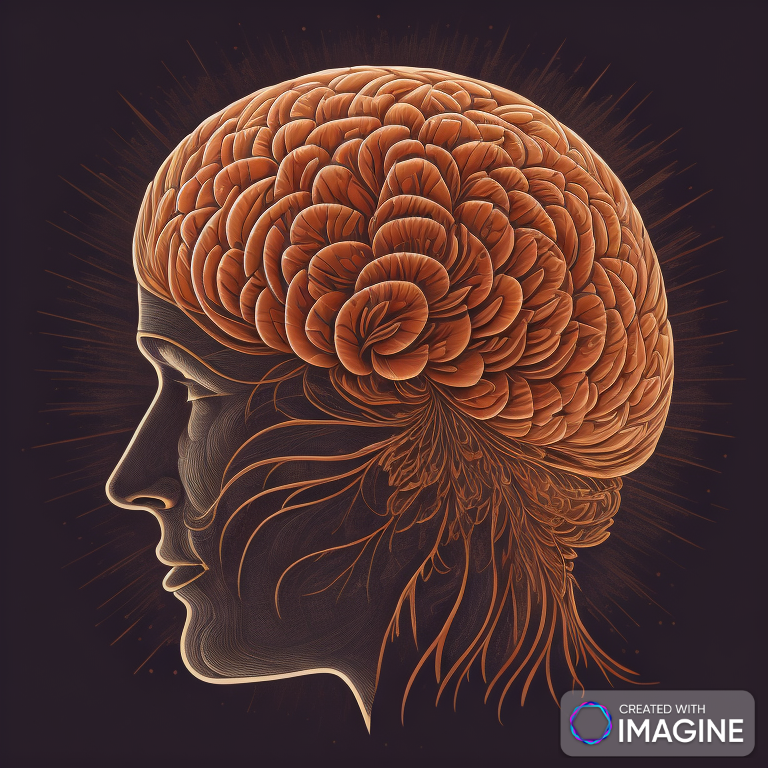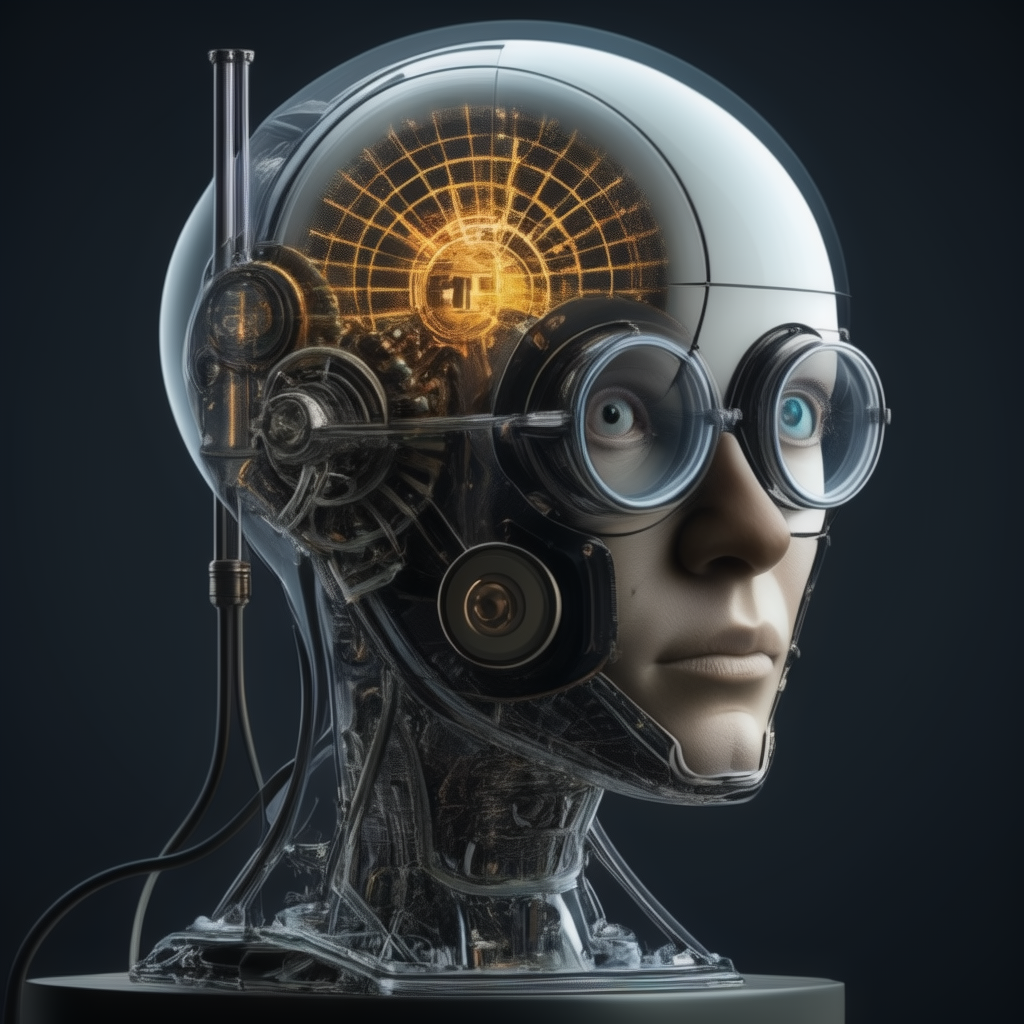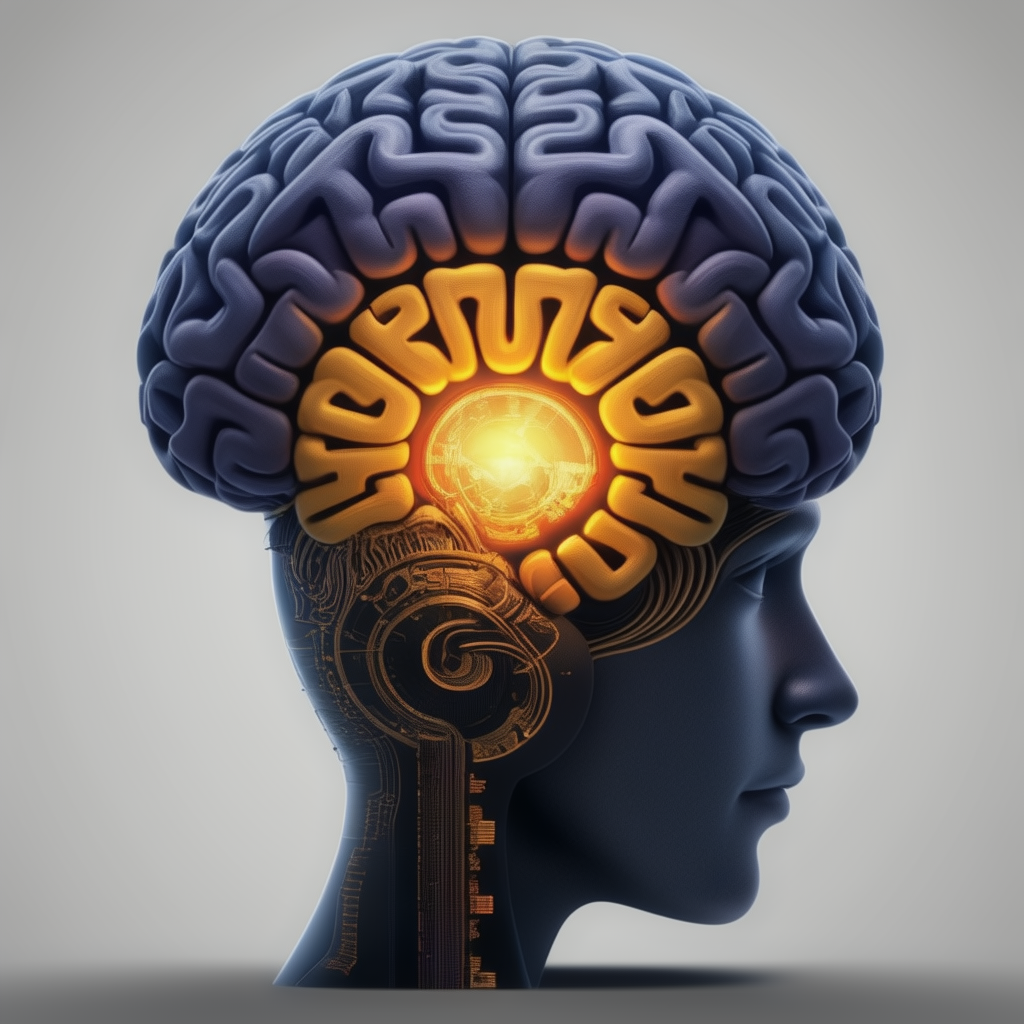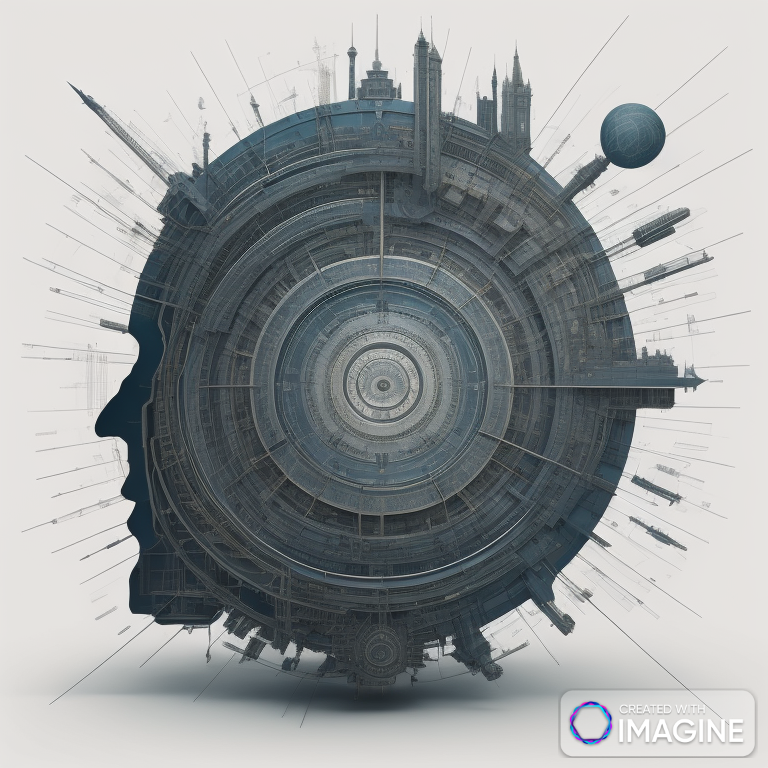Exploring Early Brains Cognitive Milestones in Human Evolution:
- Primitive Symbols:
- Pictorial Representations: Early humans communicated through rudimentary symbols, often in the form of cave paintings and carvings. These depictions served as a means to convey basic ideas, experiences, or events.
- Symbolic Artifacts: Tools and artifacts with symbolic significance showcased early attempts at representing ideas. For instance, a carved figurine might symbolize fertility or success in hunting.
- Basic Communication:
- Non-Verbal Communication: Before the emergence of complex language, humans relied heavily on non-verbal communication, using gestures, facial expressions, and body language to convey emotions, intentions, or warnings.
- Vocalizations: Primitive vocalizations, akin to early forms of proto-language, played a crucial role in conveying simple messages within social groups. These sounds could indicate danger, express pleasure, or coordinate group activities.
- Significance of Language Emergence:3.1 Evolution of Language:
- Transition to Spoken Language: The evolution of language marked a pivotal moment, transitioning from primitive forms of communication to more sophisticated spoken language. This transition allowed for a broader range of expression and abstraction.
- Knowledge Transmission: The advent of language enabled the transmission of knowledge across generations. Oral traditions, storytelling, and shared narratives became vital tools for passing down information, including survival skills, cultural practices, and historical events.
- Cognitive Advantages: Language facilitated advanced cognitive abilities such as categorization, abstraction, and conceptualization. It allowed humans to articulate complex thoughts, discuss abstract concepts, and collectively solve problems.
- Formation of Social Bonds: Language played a crucial role in fostering social cohesion. Shared communication allowed for the formation of cohesive social groups, enhancing collaboration, and collective problem-solving.
- Cultural Development: As language evolved, so did cultural development. Shared linguistic symbols and meanings laid the foundation for shared values, norms, and belief systems within communities.
- Explosion of Knowledge: The cognitive revolution, marked by the emergence of complex language, led to an explosion of knowledge. Humans could now articulate abstract thoughts, plan for the future, and engage in complex reasoning, setting the stage for cultural and technological advancements.
In summary, the early cognitive milestones in human evolution involved the development of primitive symbols and basic communication methods. The emergence of language had profound implications, shaping collective knowledge, fostering social cohesion, and triggering a cognitive revolution that laid the groundwork for the complexities of human civilization.
Mathematical Advancements in Ancient Civilizations: Babylonians, Egyptians, and Greeks
- Babylonians:
- Base-60 System: The Babylonians, around 300 BCE, utilized a sexagesimal (base-60) numeral system. This system was highly versatile, aiding in calculations related to astronomy and time. The division of the circle into 360 degrees and the concept of 60 minutes in an hour originated from this system.
- Tablets and Clay Tablets: Mathematical knowledge was documented on clay tablets. The Babylonians had a sophisticated understanding of algebraic equations and applied them to solve real-world problems, showcasing an early form of applied mathematics.
- Egyptians:
- Hieroglyphic Numerals: Ancient Egyptians employed hieroglyphic numerals, representing numbers through a combination of symbols. They developed a practical knowledge of arithmetic for tasks like surveying land and distributing resources.
- Practical Geometry: The construction of pyramids demonstrated the Egyptians’ proficiency in practical geometry. Their knowledge of geometry was grounded in the need for accurate architectural and surveying techniques.
- Greeks:
- Euclidean Geometry: Euclid, a Greek mathematician, compiled “Elements,” a comprehensive collection of knowledge in geometry, laying the foundation for Euclidean geometry. It became the standard textbook for mathematics for centuries.
- Pythagorean Theorem: Pythagoras, a Greek mathematician, contributed the famous Pythagorean theorem, which relates the sides of a right-angled triangle. This theorem has enduring significance in geometry and mathematics.
- Archimedes’ Contributions: Archimedes, another Greek mathematician, made significant contributions to geometry and calculus. His work on the calculation of areas and volumes, such as in “On the Sphere and Cylinder,” demonstrated advanced mathematical understanding.
Evolution of Numerical Systems:
- Transition to Place-Value Systems:
- Hindu-Arabic Numerals: The Hindu-Arabic numeral system, including the concept of zero, gradually replaced earlier numeral systems. It provided a more efficient and flexible way of representing numbers.
- Fibonacci’s Role: Fibonacci, an Italian mathematician, played a crucial role in popularizing the Hindu-Arabic numerals in Europe through his book “Liber Abaci.”
- Foundation for Modern Mathematics:
- Algebraic Advancements: The works of Persian mathematicians like Al-Khwarizmi, whose name gave rise to the term “algebra,” significantly advanced algebraic concepts, contributing to the evolution of modern algebra.
- Renaissance Mathematics: The Renaissance saw a revival of interest in mathematical principles, with scholars like Leonardo da Vinci and Nicolaus Copernicus integrating mathematical reasoning into various disciplines.
In conclusion, the mathematical advancements in ancient civilizations, particularly the Babylonians, Egyptians, and Greeks, set the stage for the evolution of numerical systems and the development of modern mathematics. The transition to place-value systems, facilitated by the Hindu-Arabic numerals, played a crucial role in shaping contemporary mathematical understanding. The contributions of mathematicians across cultures laid the groundwork for the rich mathematical tapestry we have today.
2.1 Language as a Cognitive Marvel:
Uncovering the Complexities of Language Evolution: Language evolution is a remarkable cognitive journey that spans millennia. Early humans communicated through rudimentary sounds and gestures, gradually evolving into complex linguistic systems. The development of language was essential for collaboration, information exchange, and societal organization.
Cognitive Demands of Mastering Language:
- Syntax and Grammar: Language mastery involves understanding the intricate rules of syntax and grammar. Syntax governs sentence structure, while grammar dictates the proper use of words and their inflections.
- Semantics and Meaning: The cognitive demands extend to semantics, where individuals must grasp the meaning behind words, phrases, and contextual nuances. This requires a sophisticated mental lexicon and comprehension skills.
2.2 The Rise of Numerical Cognition:
Evolution of Numerical Cognition:
- Basic Counting: Early numerical cognition involved basic counting, primarily for practical purposes like tracking possessions or measuring time. This foundational skill laid the groundwork for more advanced mathematical concepts.
- Advanced Mathematical Concepts: Over time, numerical cognition evolved to encompass advanced mathematical ideas. Concepts like arithmetic, geometry, and algebra became integral to problem-solving and scientific advancements.
Challenges in Grasping Abstract Numerical Ideas:
- Abstract Thinking: Understanding abstract numerical concepts poses challenges, as it requires transcending concrete, tangible representations. For instance, comprehending the concept of infinity or imaginary numbers demands a higher level of cognitive abstraction.
- Cultural and Educational Influences: Cultural and educational backgrounds significantly impact individuals’ ability to grasp abstract numerical ideas. Variances in educational systems and exposure to mathematical concepts contribute to disparities in numerical cognition.
2.3 Symbols and Logic:
Development of Symbolic Representation:
- Early Symbolic Systems: Humans developed symbolic representation, using symbols to convey complex ideas. The transition from concrete representations to symbolic systems marked a cognitive leap, enabling the communication of abstract concepts.
- Integration into Logical Systems: Symbols became integral to logical systems, facilitating problem-solving and decision-making. Logical reasoning, rooted in symbolic representation, allows individuals to analyze situations, infer relationships, and make sound judgments.
Role of Symbols and Logic in Problem-Solving:
- Problem-Solving Processes: Symbols serve as tools for problem-solving, enabling individuals to represent variables, relationships, and operations. Logic, intertwined with symbolic representation, guides systematic problem-solving processes.
- Decision-Making: In decision-making, symbolic logic aids in evaluating options, predicting outcomes, and assessing consequences. The ability to apply logical reasoning using symbols is crucial for making informed and rational decisions.
In summary, the cognitive marvels of language, numerical cognition, symbols, and logic reflect the intricate capabilities of the human mind. The evolution of these cognitive processes has played a pivotal role in shaping human thought, communication, and problem-solving throughout history.
3.1 Pressure in Academic Settings:
Analyzing Academic Pressures:
- Exam-Related Stress: Students often experience heightened stress during exams, driven by the pressure to perform well. The cognitive demands of preparing for and taking exams can lead to anxiety, affecting concentration and performance.
- Cognitive Demands: Academic settings demand cognitive prowess, including information retention, analytical thinking, and effective communication. The need to excel in these areas contributes to the overall pressure students face.
Role of Societal Expectations:
- Expectations and Cognitive Stress: Societal expectations, such as academic achievement standards, contribute significantly to cognitive stress. The pressure to meet or exceed these expectations can create a cognitive burden on students.
- Comparison and Competition: Social comparisons and a competitive academic environment intensify cognitive stress. Students may feel the need to outperform peers, adding to the cognitive challenges they confront.
3.2 Professional Anxiety in Information-Driven Jobs:
Challenges in Information-Driven Jobs:
- Data Processing Challenges: Professionals in information-driven roles encounter challenges related to processing vast amounts of data. This includes tasks like data analysis, interpretation, and synthesis, demanding high cognitive engagement.
- Decision-Making Complexity: Information-driven jobs often involve making critical decisions based on complex data. The cognitive load associated with decision-making, especially when the stakes are high, contributes to professional anxiety.
Stress in Processing Information:
- Information Overload: Professionals may face information overload, where the volume of data surpasses their cognitive processing capacities. This can lead to stress as individuals strive to manage and extract meaningful insights from overwhelming information.
- Time Pressure: Information-driven roles often operate under tight deadlines, adding a temporal dimension to cognitive stress. The need to process information quickly and accurately can elevate anxiety levels among professionals.
In summary, both academic settings and information-driven professions pose distinct cognitive challenges and pressures. Understanding these pressures is crucial for implementing strategies to manage cognitive stress effectively, promoting overall well-being and performance in both educational and professional environments.
4.1 Keen Observation and Computational Abilities:
Significance of Keen Observation:
- Perceptual Acuity: Keen observation involves heightened perceptual acuity, allowing individuals to gather detailed information from their surroundings. This cognitive skill enhances the richness of data available for processing.
- Data Input for Cognition: Observational skills serve as a foundational element for cognitive processing. The brain relies on the information acquired through keen observation to initiate cognitive tasks and engage in problem-solving.
- Link to Computational Abilities: Keen observation acts as a precursor to computational abilities, providing the brain with the necessary input for complex calculations and analyses.
Computational Power in Problem-Solving:
- Processing Information: Computational abilities in the cognitive context refer to the brain’s capacity to process information efficiently. This involves tasks such as mental calculations, pattern recognition, and data manipulation.
- Problem-Solving Efficiency: Computational power contributes to problem-solving by enabling the brain to navigate through intricate scenarios. Individuals with strong computational abilities can approach problem-solving tasks with agility and accuracy.
4.2 Decisiveness, Logic, and Rationality:
Traits in Cognitive Functioning:
- Decisiveness as a Cognitive Trait: Decisiveness involves the ability to make prompt and firm decisions. In cognitive functioning, decisiveness streamlines the decision-making process, reducing cognitive load and expediting solutions.
- Logic in Cognitive Processes: Logic forms the basis of rational thinking and problem-solving. Cognitive tasks driven by logical reasoning enhance the precision and coherence of thought processes.
- Rationality in Decision-Making: Rationality refers to the capacity to make decisions based on sound reasoning. In cognitive functioning, rationality ensures that decisions align with objective analysis, minimizing the influence of emotional biases.
Impact on Decision-Making:
- Enhanced Decision Quality: Decisiveness, logic, and rationality collectively contribute to improved decision quality. Individuals who exhibit these traits in their cognitive functioning are more likely to make well-considered and effective decisions.
- Reduction of Cognitive Strain: Decisive, logical, and rational thinking streamlines decision-making, reducing cognitive strain. This efficiency in cognitive processing can alleviate stress and anxiety associated with decision-heavy situations.
In essence, keen observation and computational abilities serve as the foundation for effective problem-solving, while decisiveness, logic, and rationality enhance the quality and efficiency of decision-making in cognitive processes.
5.1 Education and Cognitive Development:
Role of Education in Cognitive Enhancement:
- Critical Thinking Skills: Education plays a pivotal role in nurturing critical thinking skills, which involve the ability to analyze, evaluate, and synthesize information. These skills enhance cognitive capacities by fostering a deeper understanding of complex concepts.
- Knowledge Acquisition: Education serves as a conduit for knowledge acquisition. Exposure to diverse subjects and learning experiences contributes to the development of cognitive flexibility, allowing individuals to adapt their thinking to various contexts.
- Problem-Solving Competence: Educational settings often present challenges that require problem-solving. Engaging in problem-solving tasks within the educational framework enhances cognitive processes, particularly in terms of logical reasoning and analytical thinking.
Strategies for Cognitive Improvement:
- Active Learning Techniques: Implementing active learning techniques, such as discussions, case studies, and hands-on projects, promotes cognitive engagement. These strategies encourage students to actively process information, reinforcing cognitive pathways.
- Multidisciplinary Learning: Encouraging multidisciplinary learning exposes individuals to diverse perspectives and approaches. This broadens cognitive frameworks, fostering the ability to connect seemingly unrelated concepts and think innovatively.
- Continuous Learning Practices: Establishing a culture of continuous learning promotes ongoing cognitive development. Encouraging individuals to pursue knowledge beyond formal education contributes to a resilient and adaptable cognitive mindset.
5.2 Cultivating Cognitive Resilience:
Building Cognitive Resilience:
- Understanding Cognitive Resilience: Cognitive resilience involves the capacity to bounce back from cognitive stress and challenges. It encompasses mental agility, adaptability, and the ability to maintain cognitive functioning under pressure.
- Mindfulness Practices: Mindfulness, including meditation and focused breathing exercises, serves as a powerful tool for cultivating cognitive resilience. These practices enhance cognitive control, attention, and emotional regulation.
- Cognitive Exercises: Engaging in specific cognitive exercises, such as puzzles, memory games, and brain teasers, stimulates neural connections and promotes cognitive resilience. Regular mental workouts contribute to the overall health and resilience of the brain.
Strengthening Processing Capabilities:
- Neuroplasticity: Emphasize the concept of neuroplasticity, highlighting the brain’s ability to adapt and reorganize itself. Encourage activities that challenge the brain, promoting the formation of new neural connections and strengthening processing capabilities.
- Balanced Lifestyle: A holistic approach to cognitive health includes maintaining a balanced lifestyle. Factors such as adequate sleep, physical exercise, and a nutritious diet contribute to overall cognitive well-being, supporting effective processing capabilities.
In summary, education plays a fundamental role in enhancing cognitive capacities, and strategies such as active learning and multidisciplinary approaches contribute to cognitive development. Cultivating cognitive resilience involves mindfulness practices, targeted exercises, and a holistic lifestyle approach, reinforcing the brain’s processing capabilities and coping mechanisms.
5.1 Education and Cognitive Development:
Role of Education in Cognitive Enhancement:
- Divergent Thinking: Education that encourages divergent thinking, where individuals explore multiple solutions to a problem, enhances cognitive flexibility. This approach fosters creativity and the ability to approach challenges from various perspectives.
- Collaborative Learning: Engaging in collaborative learning environments promotes social cognition. Working with peers on projects and group activities stimulates cognitive processes related to communication, empathy, and teamwork.
- Feedback Mechanisms: Constructive feedback is crucial for cognitive development. Educational settings that provide timely and constructive feedback help individuals refine their thinking processes and learn from their experiences.
Strategies for Cognitive Improvement:
- Cognitive Apprenticeship: Implementing cognitive apprenticeship models, where learners work closely with experts in a field, accelerates cognitive development. This immersive learning experience allows individuals to observe and practice advanced cognitive skills.
- Problem-Based Learning: Incorporating problem-based learning approaches into education challenges individuals to apply their cognitive abilities to real-world scenarios. This method enhances critical thinking, decision-making, and analytical skills.
- Technology Integration: Leveraging educational technology tools and platforms can enhance cognitive development. Interactive simulations, virtual labs, and educational games provide engaging ways to strengthen cognitive capacities.
5.2 Cultivating Cognitive Resilience:
Building Cognitive Resilience:
- Cognitive Behavioral Therapy (CBT): Introducing principles of CBT in educational and professional contexts equips individuals with cognitive resilience strategies. CBT focuses on identifying and modifying negative thought patterns, promoting mental resilience.
- Exposure to Novel Experiences: Encouraging exposure to novel experiences, whether through travel, cultural immersion, or diverse extracurricular activities, stimulates cognitive adaptability. Novelty challenges the brain, fostering resilience to unfamiliar situations.
- Learning from Failure: Creating an environment that acknowledges the value of learning from failure contributes to cognitive resilience. Viewing setbacks as opportunities for growth enhances the ability to navigate challenges with a positive cognitive outlook.
Strengthening Processing Capabilities:
- Continuous Skill Development: Advocating for continuous skill development beyond formal education encourages individuals to stay intellectually engaged. Acquiring new skills and knowledge contributes to the ongoing plasticity of the brain.
- Mind-Body Practices: Introducing mind-body practices such as yoga and tai chi not only enhances physical health but also positively impacts cognitive function. These practices emphasize the mind-body connection, promoting overall cognitive well-being.
- Cultural and Artistic Exploration: Exposure to diverse cultural and artistic expressions enriches cognitive processing. Engaging with literature, music, art, and different cultural perspectives broadens cognitive frameworks.
In essence, a multifaceted approach to education that incorporates divergent thinking, collaborative learning, and feedback mechanisms is essential for cognitive development. Strategies like cognitive apprenticeship, problem-based learning, and technology integration further enhance cognitive abilities. Cultivating cognitive resilience involves practices like cognitive behavioral therapy, exposure to novel experiences, and embracing failures as opportunities for growth. Strengthening processing capabilities encompasses continuous skill development, mind-body practices, and exploration of diverse cultural and artistic dimensions.
5.1 Education and Cognitive Development:
Role of Education in Cognitive Enhancement:
- Scientifically Grounded Teaching Methods: Incorporating evidence-based teaching methods that align with cognitive science principles enhances the effectiveness of education. Strategies such as spaced repetition, retrieval practice, and interleaved learning optimize memory and long-term retention.
Strategies for Cognitive Improvement:
- Neuroplasticity Exercises: Designing educational programs that include neuroplasticity exercises, such as learning new languages, musical instruments, or engaging in complex problem-solving, promotes the brain’s adaptability and growth.
- Mindfulness Practices: Integrating mindfulness practices into the curriculum helps students develop attention, focus, and emotional regulation. Scientific studies support the positive impact of mindfulness on cognitive functions and overall well-being.
5.2 Cultivating Cognitive Resilience:
Building Cognitive Resilience:
- Cognitive Enhancement Through Nutrition: Exploring the impact of nutrition on cognitive function is crucial. Diets rich in omega-3 fatty acids, antioxidants, and other essential nutrients contribute to brain health. Educating individuals about the connection between diet and cognitive resilience is essential.
Strengthening Processing Capabilities:
- Physical Exercise and Cognitive Health: Promoting regular physical exercise as an integral part of education enhances cognitive functions. Exercise has been linked to improved memory, attention, and overall cognitive performance. Understanding the neurobiological mechanisms behind exercise-related cognitive benefits is vital.
- Sleep Hygiene Education: Educating individuals about the importance of sleep and proper sleep hygiene practices is essential for cognitive well-being. Scientific evidence underscores the role of sleep in memory consolidation, learning, and overall cognitive function.
- Integrating Arts and Creativity: Recognizing the profound impact of arts and creativity on cognitive abilities can lead to holistic education. Artistic expression, whether through visual arts, music, or other forms, has been associated with enhanced cognitive flexibility, problem-solving skills, and emotional intelligence.
- Spiritual Practices and Cognitive Wellness: Exploring the intersection of spirituality and cognitive wellness can provide valuable insights. Practices such as meditation and contemplation have shown positive effects on attention, stress reduction, and overall cognitive resilience. Understanding the neural correlates of these practices contributes to their integration into educational approaches.
- Interdisciplinary Learning: Promoting interdisciplinary learning environments allows individuals to engage with diverse fields, fostering cognitive adaptability. Understanding the neurological benefits of interdisciplinary thinking encourages educational institutions to embrace a more integrated approach to knowledge.
Incorporating scientifically grounded teaching methods, neuroplasticity exercises, mindfulness practices, and knowledge about the impact of nutrition on cognitive function enhances the educational experience. Building cognitive resilience involves understanding the role of sleep, promoting physical exercise, and recognizing the cognitive benefits of artistic expression and spiritual practices. Embracing interdisciplinary learning environments further contributes to cognitive adaptability and holistic education.
Conclusion: In conclusion, the intricate tapestry of human evolution, intertwined with the development of language, numbers, symbols, and logic, has bestowed upon us a powerful intellect. However, the challenges individuals face in processing this information are profound. By understanding the historical context, acknowledging cognitive pressures, and actively working towards enhancing cognitive capacities, we can navigate the complexities of modern cognitive demands with resilience and proficiency.







